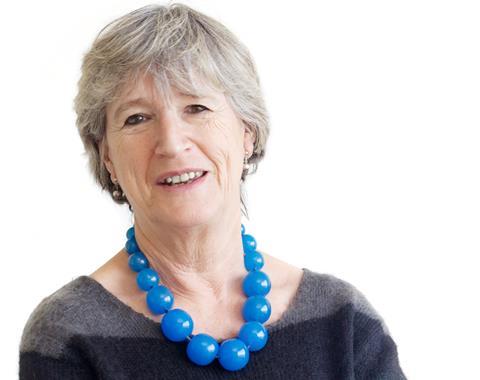Gillian Darley applauds overdue moves to give proper recognition to pioneers of the profession

There’s a lot going on at the moment to celebrate and reinforce the rising numbers and importance of women in the architecture profession. The process also allows due recognition, at last, to some of those who have unaccountably been side-lined. Currently, a sustained effort is being made by the Part W action group to ensure a woman is nominated for the next RIBA Gold Medal. A highly deserving candidate is surely Denise Scott Brown, so shockingly Tippexed (or Photoshopped, if you prefer) out of the 1991 Pritzker Prize that was awarded solely to her professional partner, who happened to be her husband, Robert Venturi.
A useful measure of the rate of progress comes from the comparisons offered in the July 2019 update of the Oxford Dictionary of National Biography (ODNB) which illuminates several of that cohort of young women who entered the profession in the 1920s and 30s. Now wrested from the shadows, or at least from the more niche areas of feminist reappraisal, several emerged when the Architectural Association marked the centenary of women’s entry into their school in 1917. Early AA graduates were numerous enough, the archives sufficiently extensive to provide rich material for an exhibition, a book (to which I contributed a chapter) and a conference. But for all the AA’s dominance in those years, women were emerging from elsewhere, too, and it was the shift away from pupillage to the courses offered by architectural schools that nudged the door open to insistent women, only for them to face the casual misogyny that set them obstacles at every turn.
The ODNB group, selected by advisory editor Elizabeth Darling, are an interesting bunch. While several of their peers, such as Elisabeth Scott, Ethel Charles, and Judith Ledeboer, were already included – with several entries written by Lynne Walker, Darling’s colleague on the 2017 AA programme – the latest tranche represents those who fell between the cracks. Some were hidden in plain sight as team members, often working on housing standards and public sector housing, at the LCC or on the new town programme, while others fell neatly into the husband-and-wife practice pattern, badged by the former over the latter. The pressures of family life tended to be one step forward, two steps back for working women.
As pressure mounts on modern architectural offices to ensure parity for all qualified staff, gender notwithstanding, then it might help the conversation if we all read about these careers, each a small triumph of resolve and talent and, tellingly, often nurtured in Quaker or Fabian tending families. Not only are there several resounding firsts, such as the architectural partnership of Norah Aiton and Betty Scott who were responsible for the first modernist industrial building in the UK, in Derby, but also key voices arguing for improved living standards, often those women who had added planning skills to their architectural qualifications. One such was Justin Blanco White whose remarkable career progressed from wartime research to fully built demonstration projects (in Scotland where her husband took up an academic post) and then to hospital design, one of several strands of her work cited when she was given an OBE in 1976.
Determinedly still on stage, and now one of the leading names for Part W’s nomination list for a rare RIBA Gold Medal for a woman, is Kate Macintosh. She has never quenched her flaring anger at the attrition of public housing (including her admired work for the London Boroughs of Southwark and Lambeth) and now steps forward, in her 80s, to remind us that the experience and convictions of age are invaluable.
















6 Readers' comments